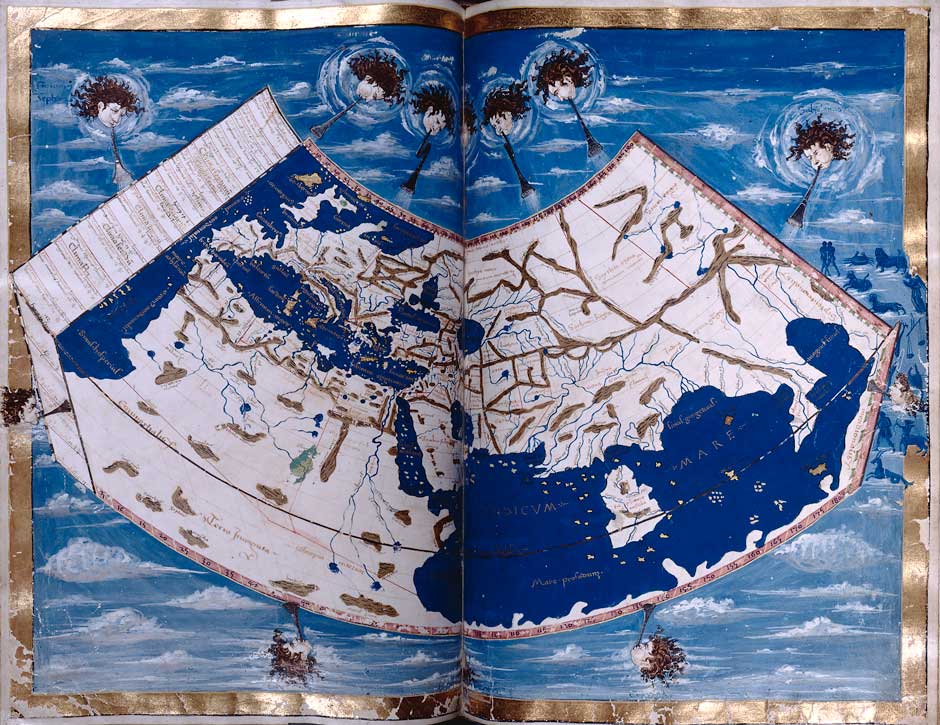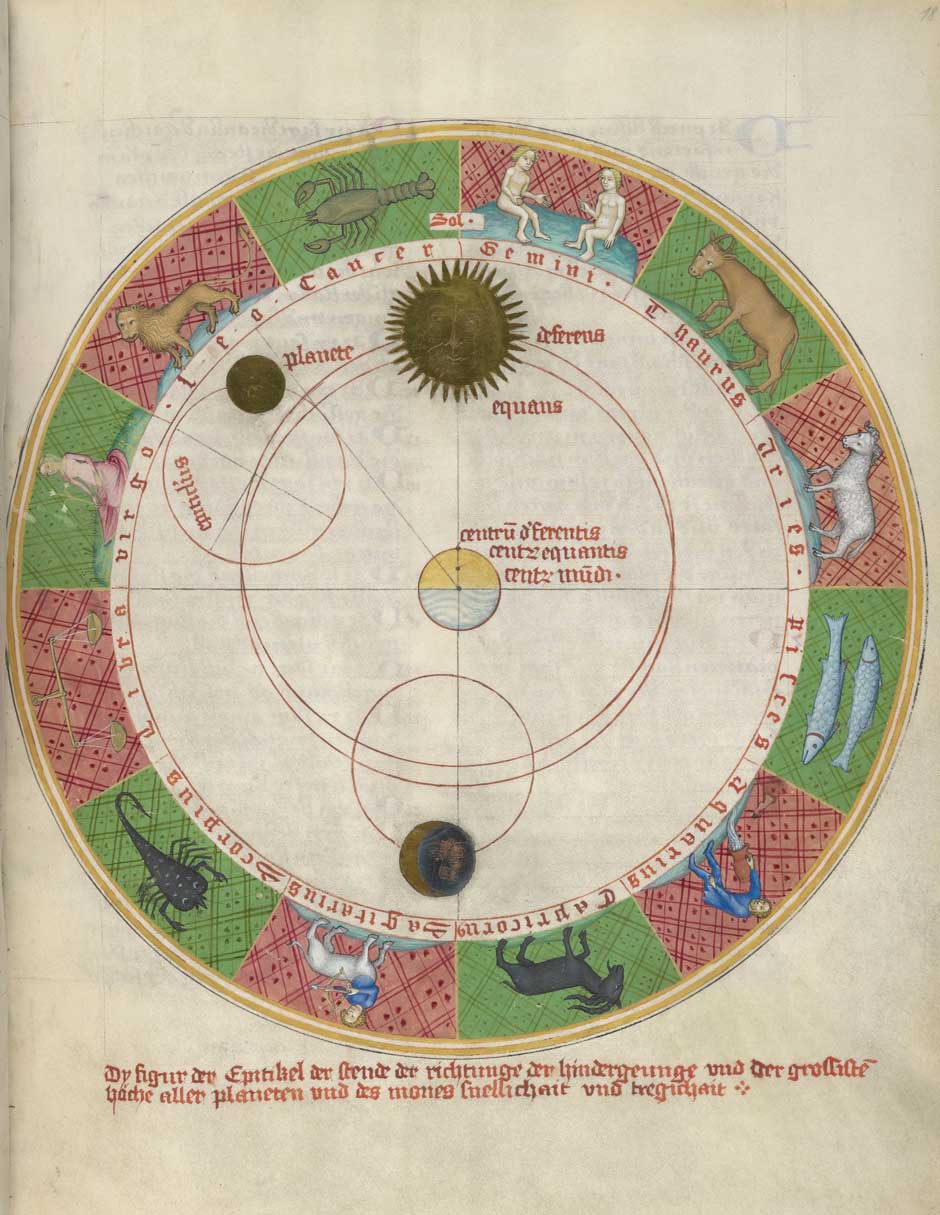Around 450 BC, Hanno, the King of Carthage, led a fleet of sixty ships on a colonizing expedition down the west coast of Africa. Along the way he kept a log, recording the locations of the colonies he founded and the sights he saw: a race of men called the Troglodytae, said to run faster than horses; “a country burning with fire and perfume;” a towering volcano called the Chariot of the Gods. This type of log was called a periplus, an ancient wayfinding document that listed the ports of call and natural landmarks navigators could expect to find when sailing from one location to another. According to the exhibit “Measuring and Mapping Space: Geographic Knowledge in Greco-Roman Antiquity,” these texts, which often incorporated literary description and even myth (many, for instance, have debated the veracity of Hanno’s periplus), were among the preferred means of navigating for ancient mariners.
“Measuring and Mapping Space,” at NYU’s Institute for the Study of the Ancient World through January, aims to explain how Greeks and Romans thought of the world around them, and how these beliefs were in turn represented in maps, globes, and even coins and pottery. Unfortunately, though a number of ancient geographical treatises still exist today, almost no actual maps have survived. But the show’s curator, Roberta Casagrande-Kim, has dealt with this brilliantly. By displaying, among much else, a striking collection of illustrated Renaissance manuscripts on geography and cosmology—themselves reconstructions of the work of classical geographers like Ptolemy—the exhibition manages at once to suggest not just what ancient maps may have looked like, but how ancient geography influenced modern notions of topography and geography.
Entering the first room of the exhibition, one sees beautiful Renaissance manuscripts showing ancient conceptions of the universe (geocentric, much to Galileo’s dismay). Next, images of the earth—spherical, not flat—and the known world are displayed. Of these the most striking by far is the map from a fifteenth century Florentine manuscript copy of Ptolemy’s Geography, which shows Europe, Africa, the Mediterranean, and Asia.
These large-scale attempts to depict the order of the world and its cosmology come largely from the Greek tradition, which is thought to have begun in the sixth century BCE with the pre-Socratic philosophers. The more localized, practical maps come, perhaps unsurprisingly, from the Romans, concerned about assessing the extent of their empire, measuring plots of land for taxation, and keeping track of their many roads, among other things. It was with the Romans that the so called itinerary—the land based version of a periplus—began. The itinerary was, like the periplus, a written text, though perhaps the most fascinating map in the exhibit, the Peutinger Map, can be seen as a graphic itinerary. The Peutinger Map illustrates the Roman empire’s networks of roads from Spain and Britain in the west to India in the east. Displayed in a twenty-two-foot-long replica, it is a thirteenth-century copy of a fourth-century edition of an even older Roman map.
Those who cannot visit the exhibition in New York can still take advantage of its rich online components—overseen by Tom Elliott, the Institute’s Associate Director for Digital Programs—which include, among much else, the Pleiades gazetteer, a wiki compendium of information about ancient sites that assigns each location a unique code. But most engaging is a digital reproduction of the Peutinger Map that can be enlarged and examined in close detail (close enough, for instance, to see where the map marks the point at which Alexander the Great decided to abandon his quest to conquer the world, or where it notes that elephants and scorpions are born).
“Measuring and Mapping Space” is at the Institute for the Study of the Ancient World in New York through January 5, 2014.





